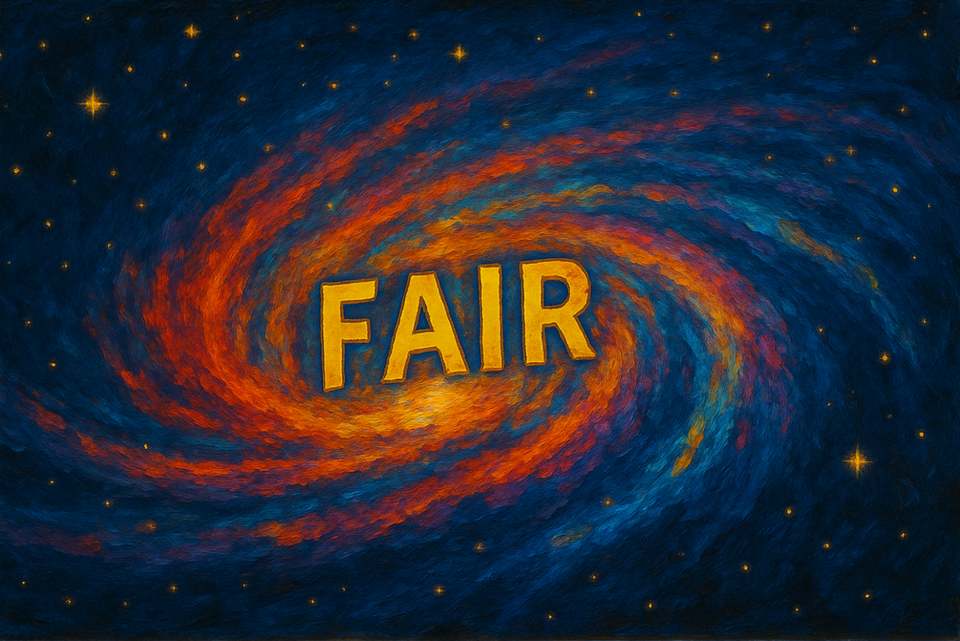FAIR and Square? The Challenges of Ethical Omics Data Sharing

Before starting - what is Omics Data?
Omics data represent massive volumes of information on genomes, epigenomes, transcriptomes — you name it. They’ve become a favorite among researchers, reviewers, and publishers. But at what cost?
I’m not even talking about the huge financial investments it takes to generate good quality data with proper replicates. My focus here is: how do we share these terabytes of data clearly, precisely, and ethically so they really benefit science?
Sharing: When Good Intentions Meet Hard Reality
Sharing open data is something many of us don’t actually know how to do FAIRly. The practicalities aren’t practical at all. Few people enjoy filling out more than two-page forms for each dataset (okay, I do — I have a thing for order and spotless data; my kitchen is proof!). For most researchers, data sharing feels like a tedious chore rather than an exciting part of the scientific process. And I understand them. And I empathize.
The Big Data Bang and the Birth of FAIR
The Big Data era hit science like a big bang — a sudden explosion of serial numbers, codes, and files into the digital universe. At first, nothing was really in place to control this flood. As gravity shaped the cosmos, FAIR principles were proposed to bring order.
But let’s be real: do you remember off the top of your head what FAIR stands for? (Don’t worry, I had to look it up too several times before it stuck:)
Findable,
Accessible,
Interoperable,
Reusable.
Sounds great on paper, right? But in practice? Sure, my data are “findable” — on my hard drive. “Accessible”? Also on my hard drive. “Interoperable”? Uh… what? And “Reusable”? For whom, for what? I published the data; isn’t that enough?
We need to stop to consider these datasets are just tools for our work — they’re seeds for future discoveries! They can also become siblings to other datasets forming larger, richer resources that drive new insights.
So please, before your next collection of bytes of sequencing data, set aside time to read about what are the FAIR principles (https://www.go-fair.org/fair-principles/). Of course, they don’t solve everything, but they are a great step toward sharing data FAIRly.
However, we might need to approach them in a way which makes more sense to all. For example, the proper definition for Interoperable is " The data usually need to be integrated with other data. In addition, the data need to interoperate with applications or workflows for analysis, storage, and processing." - quite confusing and blurry, right? But if I tell you:
Interoperable means that data can be combined with other datasets in common formats — like plugging in Lego blocks that fit together? Makes more sense now, right?
Is Data Sharing Always FAIR? Not Quite At The Moment
- The Pressure of Open Data Policies
More journals and funders demand that we deposit our datasets in public repositories. Sounds good — except they often ask for more than what most labs have realistically produced. If you’ve fought to collect N=3 with two conditions and five time points, sharing feels like exposing hard-won work to competitors or large groups who mine public data for their own models — often before you have finished telling the full story.
(Tip: Request reasonable embargoes!)
- The Fear of Misuse and Getting Scooped. Because FAIR is not a Magic Shield
“What if someone reuses my data without proper credit? What if I’m scooped?”
Terms of use and recommended citations exist, but enforcement is weak. Smaller labs or those with less funding often feel most vulnerable.
FAIR helps us organize and open data. But it doesn’t protect against unethical reuse or guarantee credit. And getting to FAIR compliance takes time, expertise, and money — things many labs don’t have in abundance. The task usually falls to the PhD student or postdoc who produced the data, who ends up spending late evenings filling out endless metadata tables, chasing down colleagues for missing info, and Googling the GPS coordinates of the lab (yes, I have been there!).
"Here is your paracetamol and favorite energy drink. Hang in there!" says the PI.
The dream scenario would be to have dedicated data managers in every lab or at least institution. But as I noted, that remains a dream. So each of us needs to take on this role as best we can.
- A Culture That Needs to Shift - and How to Create your Own Magic Shield
The technical solutions exist. The ethical ones? That’s where we maybe lag. Ethical sharing demands that we value openness and fairness equally — not just one or the other. And this is a responsability for all of us.
So What Can We Actually Do?
Here is a proposed toolbox;
Choose good repositories — those that issue DOIs and track usage (e.g. Zenodo, Dryad, EGA)
Publish data papers if possible — make your dataset itself a citable product
Promote responsible sharing — speak up at conferences, join consultations, encourage fair citation in your lab, institute, field
At the end of the day, sharing omics data ethically isn’t just a technical task — it’s about building a scientific culture that sees value in both openness and fairness.
Let's make the dream come true, together.
Want to Explore the Omics Universe Deeper?
- Wilkinson et al. (2016). The FAIR Guiding Principles for scientific data management and stewardship. Scientific Data 3:160018. https://doi.org/10.1038/sdata.2016.18
- European Molecular Biology Laboratory - European Bioinformatics Institute (EMBL-EBI)

Comments ()